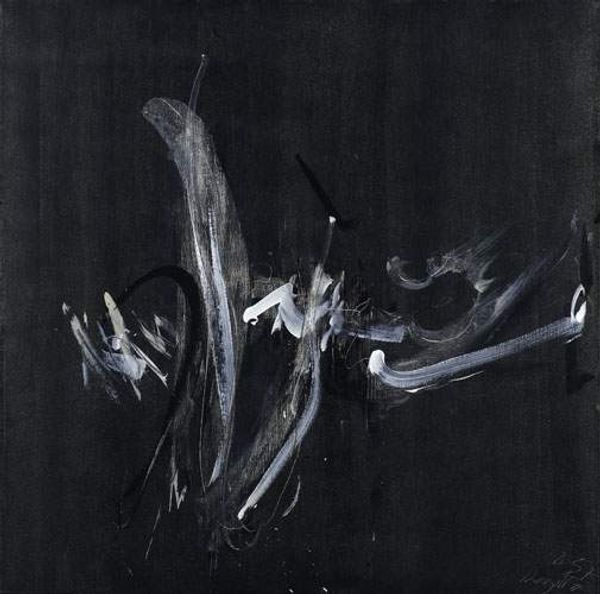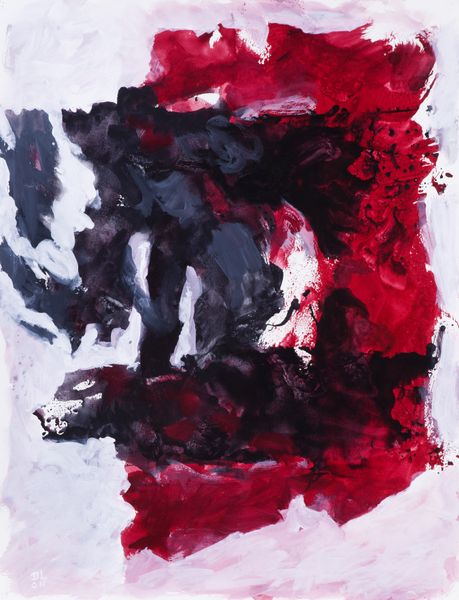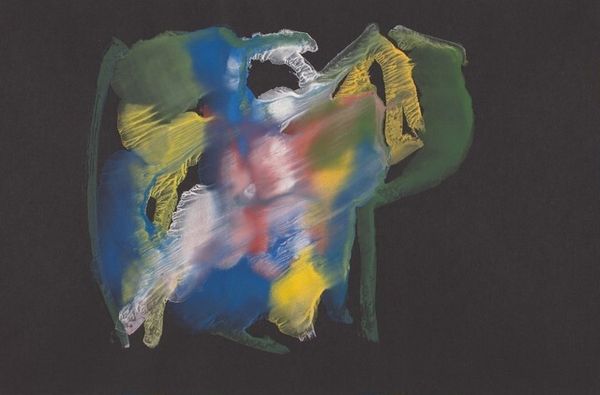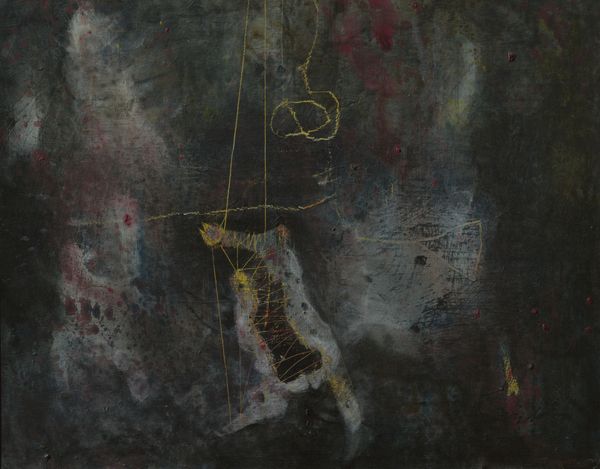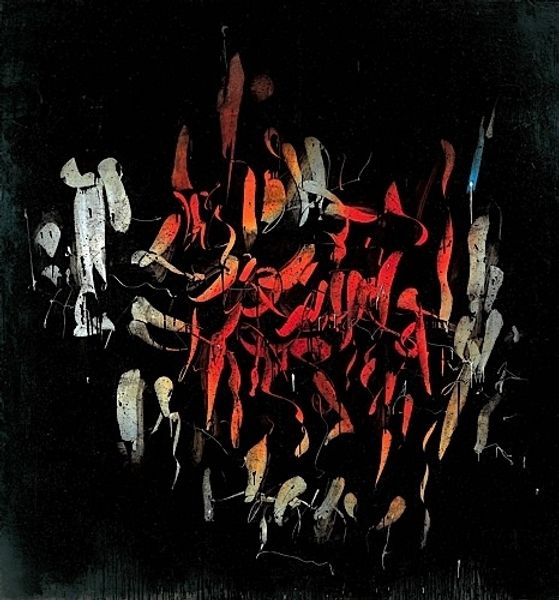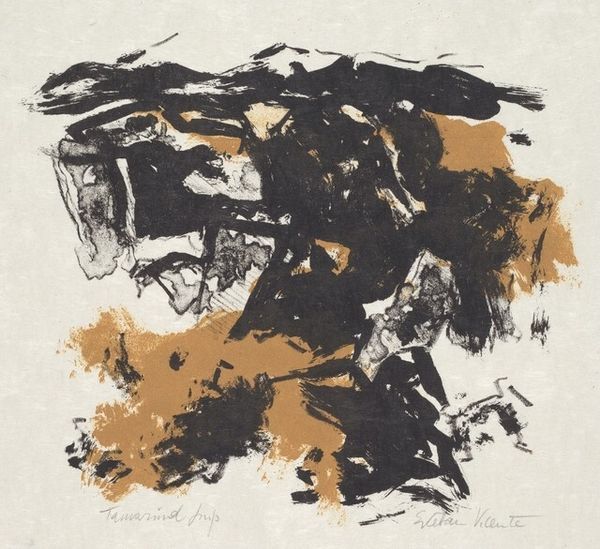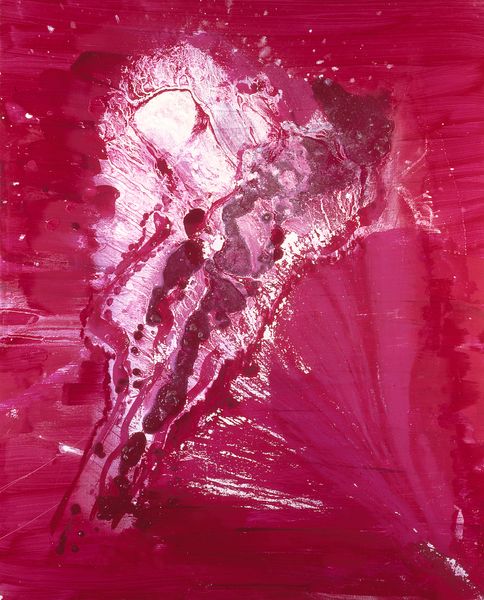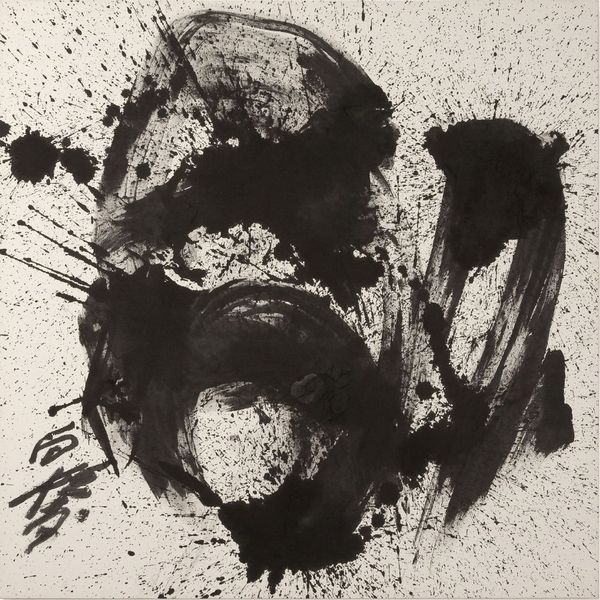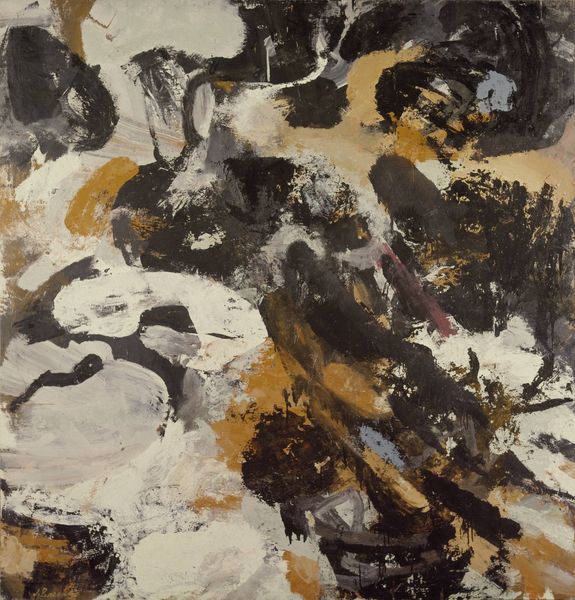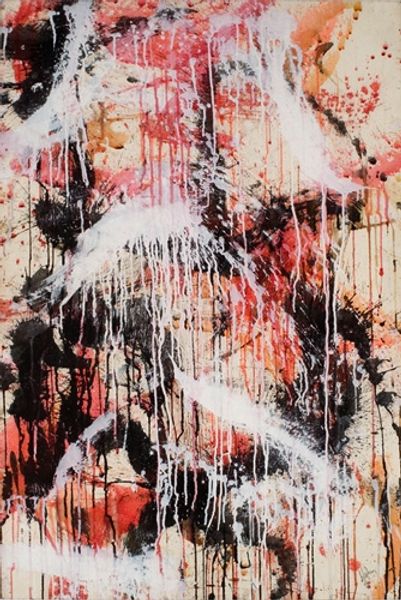
drawing
#
drawing
#
fantasy art
#
sculpture
#
sculptural image
#
possibly oil pastel
#
fluid art
#
neo expressionist
#
sculpting
#
underpainting
#
unfinished
#
ruin
Dimensions: sheet: 30.4 x 47 cm (11 15/16 x 18 1/2 in.)
Copyright: National Gallery of Art: CC0 1.0
Curator: This drawing is by Frederick Sommer, made in 1954. The swirling shapes are mesmerizing. What is your immediate impression? Editor: Chaos. Controlled chaos, perhaps? It's a swirl of whites, reds and browns, like seeing through something decaying. The black background amplifies the effect. I'm wondering about the materiality. It gives the impression of maybe pastel or ink, possibly over some underpainting. Curator: Yes, and thinking about Sommer, this work arrives at a moment deeply entangled with Cold War anxieties, but also grappling with shifts in social values, civil rights and gender equity. I can't help but view this work as an allegory for that moment—this feeling of collapse. Editor: It could definitely signify anxieties bubbling under the surface of the social order, especially if you think about that material aspect again. The use of potentially impermanent materials speaks to an existential questioning and to art that refuses to sit comfortably as decoration. The choice to set these swirling colors against black pushes them forward as if the colors will decay more each second they're revealed. Curator: The rawness in its production connects it to a historical network of experimentation with art production, in the spirit of surrealism and automatism. A technique meant to release repressed imagery, but the final form certainly moves beyond those boundaries. I’m wondering if this technique became an intuitive method to approach more loaded political commentary about our shared social landscape? Editor: It absolutely begs questions about the process: Did the dark background come first, creating limitations, or did that final contrast arise more organically from adding dark to the negative spaces. What kinds of gestures and tools did Sommer use? Thinking through all these questions about process makes this so incredibly compelling and socially engaged. It’s a constant reveal, both of what materials might constitute this form and of the meanings we impose onto such forms. Curator: Yes, the interplay of intent and accident. Sommer’s drawing serves as a mirror reflecting our own historical, social, and even political positions, forcing us to confront uncomfortable truths. Editor: Right, like, considering those truths allows the drawing itself to become this social document. You have to think through both material means of production and what meaning the forms may acquire with viewers in a particular period. Curator: Precisely. This artwork doesn't shy away from provoking thought. Editor: Indeed, provoking and exposing—all in one furious, glorious swirl.
Comments
No comments
Be the first to comment and join the conversation on the ultimate creative platform.
